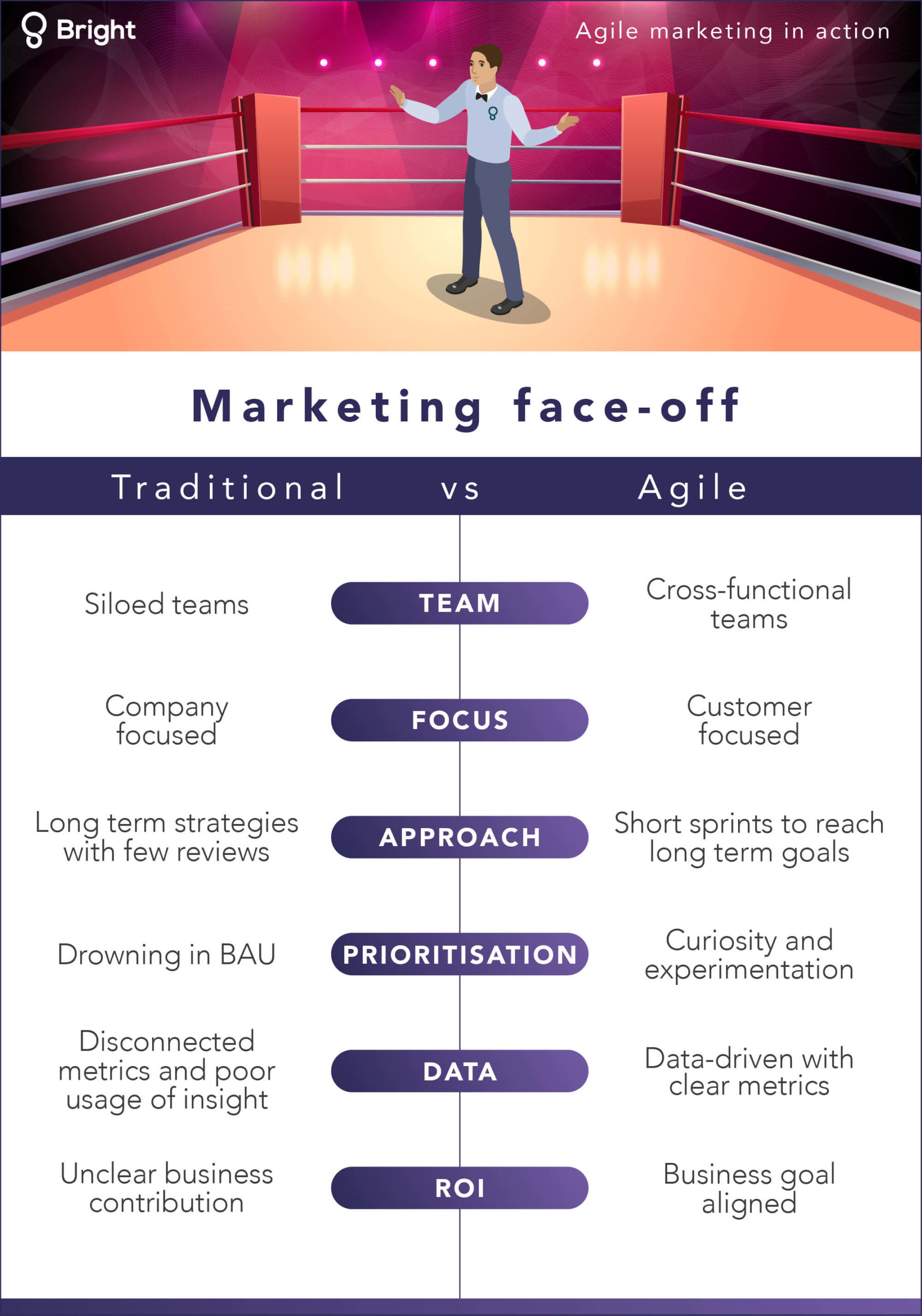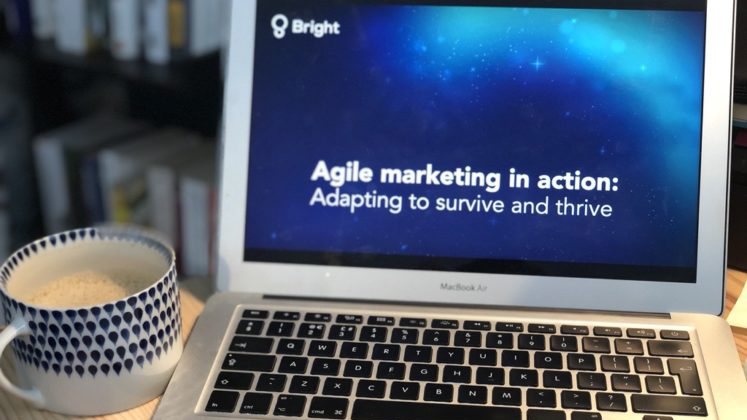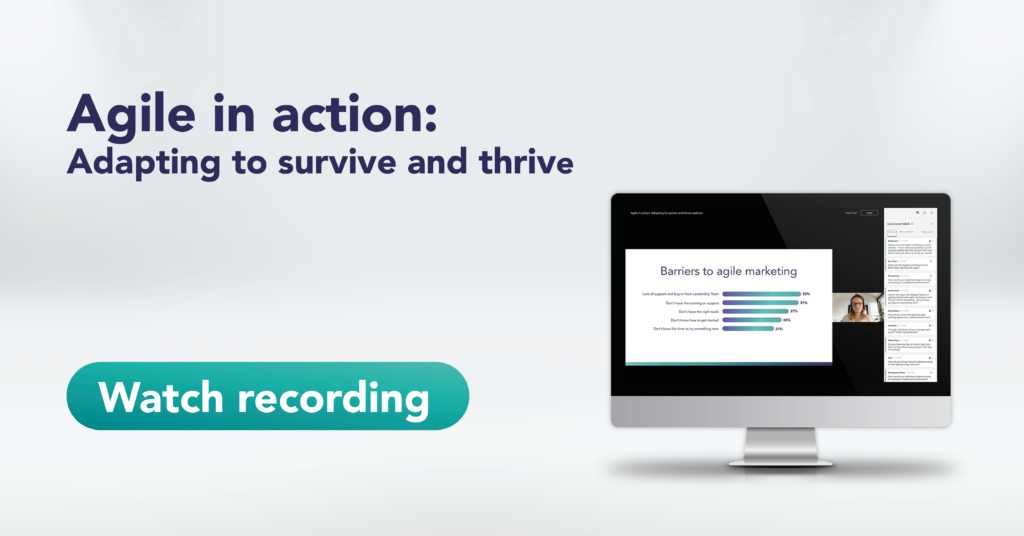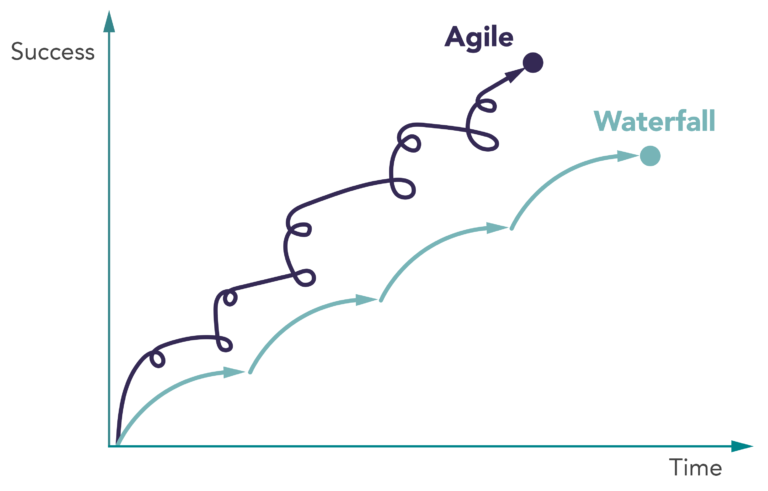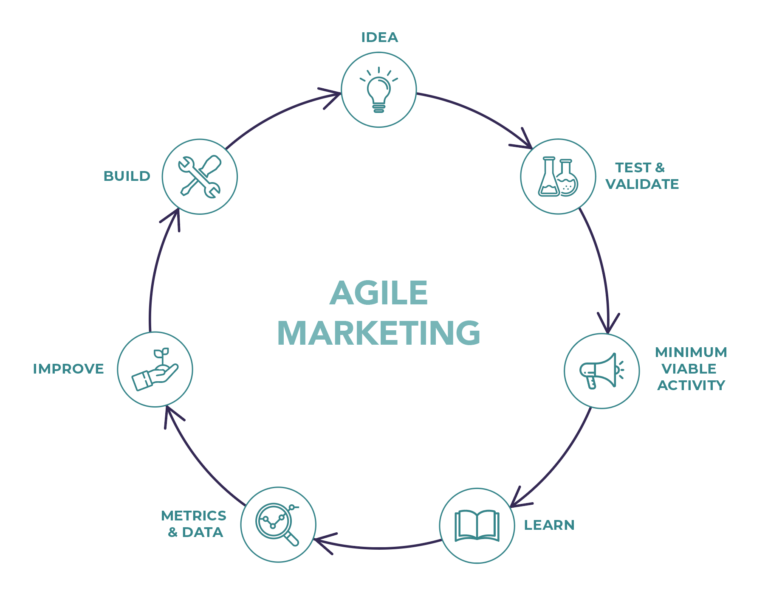When your audience can no longer come to you, creating engaging virtual and digital experiences has become vital for businesses, now more than ever. From webinars to masterclasses to 3-day virtual conference events, virtual knowledge sharing has fast become the new normal. Pre-pandemic, over 50% of businesses planned to increase the number of webinars they produced in 2020 and we can assume this has increased vastly in the last few months. Businesses are having to pivot quickly, switching physical events to online events, with webinars being the popular option for many marketeers. They are a highly effective way of building an audience and launching it at speed.
In a recent post, we discussed the best time to host a virtual event for a global and local audience. Read on for some more top tips to hosting a successful webinar (like our recent one, Agile in Action).
Tip 1: Create engaging content
You have an average of 50 minutes with an audience of prospects, so webinars are a powerful marketing tool, but you need great content to keep them engaged. A visually appealing, text light presentation can increase engagement from the viewers and result in more highly qualified leads. Choose a niche topic that is relevant, touches on your target audience’s pain point(s), and is something you can provide expertise on – and a solution.
Got a lot of information to share? Kick-start a regular stream of content. Building a hub of webinars on your website establishes your company as a thought leader in the sector. As you run more sessions, you’ll learn what works well with your audience and continuously optimise your performance.
Tip 2: Promote your webinar everywhere
Content is key for an engaging webinar but so is the promotion. How many times do you register for a webinar, receive a reminder almost a month in advance and possibly the day before, but still forget about it or remember too late?
Promotion should start a minimum of two weeks before, but we would recommend earlier – four – six weeks. Naturally, a longer promotional period will boost registration rates and can increase the number of attendees on the day.
It takes time, and multi-channel campaigns for people to be aware and excited about your webinar. Promote it everywhere – on social, blog posts, your website, via your partners and through email – still one of the biggest drivers of webinar registrations at 57%. Rather than hammering home the same event reminders, add valuable supporting content to the mix. For example, relevant blogs, speaker information, a kick-start guide or infographic – all of which help set the scene and build enthusiasm, ensuring your audience doesn’t fatigue. This is about those who have registered for the webinar too – what content will they find interesting? Keeping registrants’ warm helps increase live attendance and interaction.
Don’t forget to start planning and creating your post-webinar follow-up communications (see tip 5). Whether they attended live or not, this is the beginning, and arguably most important step, when converting webinar leads from MQL to SQL.
Tip 3: Engage and interact with your audience
92% of webinar attendees are looking for a Q&A / opportunity to ask questions. So ask registrants to send in their questions pre-webinar. Not only does this keep your registrants thinking about your event but it gives you time to prepare answers to those questions and time to manage extra ones that come in during the Q&A.
Selecting a reputable webinar platform that you can trust and that provides the right user experience. Zoom, On24, Microsoft Teams, Go To Webinar, Google Hangouts – there are a wide range of platforms but choose one that is secure, can integrate seamlessly with your martech, and is easy for your team to use (they will be in control on the day). Take advantage of polls and quizzes (included in some of these platforms) during the webinar to get live feedback from the audience during the event.
Tip 4: Practice makes perfect
Bring together your script, slides (even if they’re still in draft) and any guests or hosts for the webinar and do a dry run at least once before the big day. This will help everyone understand timings, allow you to refine the presentation further and give your speakers time to gel-together. It’s also a good opportunity to iron out any technical hitches before the go live! Ensure you have the best equipment – microphone, cameras etc. to eliminate any technical issues and help build your confidence!
Tip 5: After curtains close, game time
So, the webinar has finished and it was a success – well done! The 24-48 hours after the webinar is key. Ensure you follow-up with attendees, thank them for joining and provide them with the recording and slides. Don’t forget about the contacts who registered but didn’t log-on live (up to 35% of webinar sign-ups are people who will want to watch it on-demand) so get the recording and slides over to them too, and thank them for registering.
Go the extra mile – these are you prospects after all – offer free templates to help them get started, a relevant report or thought leadership piece. Anything the attendees didn’t anticipate receiving is an added bonus!
Finally, timely delivery of your well-planned follow-up nurture emails (see tip 2), start now. Over the next few weeks you need to do everything you can to convert some of those prospect leads into customers. Don’t expect them to come to you, they have shown their level of interest across the last few weeks as they have engaged (or not) with your content and virtual event. Now it’s time to nurture them, connect on LinkedIn and find out if there is an opportunity to be won!
Our upcoming webinar will go over How to succeed at virtual events, including how you can make the most of your events. The webinar will take place on Wednesday 24th June, 11am BST. Register now to save your seat.
Check out our previous blog posts on virtual events, including When to hold a virtual event and a summary of our last webinar, Agile in Action.
